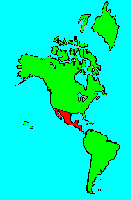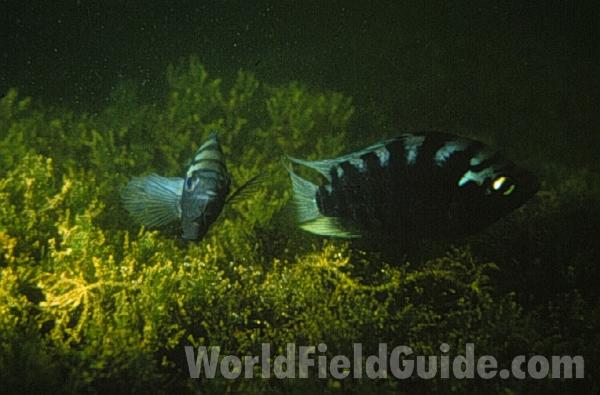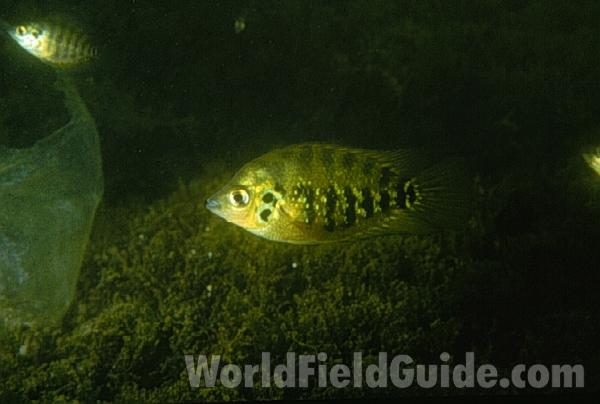SPECIES INFO
Cichlasoma centrarchus is a very pale brown color. There are several poorly marked somewhat interrupted vertical bars on the side of the body. The image in Burgess-Axelrod 1985 atlas of freshwater aquarium fish shows two black circular spots on the gill cover.The genus Cichlasoma is found from Texas in North America to as far south as Argentina. As of 1985 Burgess-Axelrod estimated over 100 different species in this genus. There are perhaps more if some of the subspecies become elevated to full species. Most species grow to lengths from 4 to 12 inches. The males usually have longer anal and dorsal fin rays.
Robert Rush Miller in 2005 noted: In 1983 Kullander restricted the generic name of Cichlasoma to a small group of South American Cichlidae. Miller then notes that all Central American Cichlidae in the genus Cichlasome are then without a proper genus name. He then points out that the following seven genera could help solve the problem:
Amphilophus with multiple species groups usually with thick lips
Archocentrus a group of smaller species
Herichthys for a group of Gulf Coast Cichlids from Texas to Veracruz
Parachromis for a group of elongate fishes with canine teeth.
Petenia for a group of spectacular highly specialized fish
Theraps for a group of elongate slender fish
Vieja for a group of fish with blunt rounded heads.
South American Cichlids have been separated from the African Cichlids to facilitate study of this large family. Many popular freshwater aquarium fish such as the Severum, Discus, Oscar, and Angel Fish are included in the South American Cichlids.
Cichlidae group of African and South American freshwater fish are a favorite with tropical fish fanciers because of their many nice colors. This is a very large family with numerous species.
To facilitate study of this family, we have divided the Cichlidae into sections based on the geographical origin of the species. This helps somewhat, but one must remember that quite a few of the species have been introduced beyond their native continents.
Perch-like Fish, Order Perciformes, are the largest order of fish in both freshwater and shallow saltwater. Most of the conventional fish belong to this order. The bass, bluegills, perch and crappies of freshwater plus the groupers and sea bass of salt water belong to this order. The fish all have spiny rays in their fins and the tail fin has seventeen rays. There are approximately 150 families. Herein, we have placed the families in alphabetical sequence within this order. (In some instances the typical taxonomic sequence of families is not much help. Consider, for example, that the barracudas are usually placed between the mullets and the threadfins.)
Bony fish, Class Teleostomi, are a class of chordates that include the majority of fish-like animals found on earth. They are characterized by a bony jaw and a bony skeleton. They are found in both fresh and marine waters.
Backboned Animals (Phylum Chordata) are the most advanced group of animals on earth. These animals are characterized by having a spinal cord or backbone. Most members have a clearly defined brain that controls the organism through a spinal cord. Fish, amphibians, reptiles, birds, and mammals are in this phylum.
Currently, some taxonomists believe that the fish should be divided into two groups (sharks and regular fishes) and that there are some other primitive groups in the phylum such as hagfish or lampreys.
Animal Kingdom contains numerous organisms that feed on other animals or plants. Included in the animal kingdom are the lower marine invertebrates such as sponges and corals, the jointed legged animals such as insects and spiders, and the backboned animals such as fish, amphibians, reptiles, birds, and mammals.




